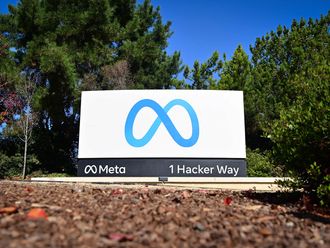Rome: While European competitors close factories and get government bailouts, Italian carmaker Fiat is banking on its under-exposed luxury brands to put idled Italian car plants to work and stem losses in its European operations.
Fiat CEO Sergio Marchionne announced an ambitious four-year plan Tuesday to ramp up production of Alfa Romeo and Maserati brands in Italy, where Fiat will launch 17 new models to be built in Fiat’s five Italian plants from 2013-2016. Fiat, which owns U.S. carmaker Chrysler, also will unveil a new smaller Jeep for production in Italy aimed primarily at Europe, and focus the Fiat brand on the 500 and Panda compact car ranges.
“This is truly not for the faint-hearted,” Marchionne said. “We have not shied away from a fight.”
Marchionne said he believes the investments, part of new capital expenditures of €16 billion ($21 billion) to€18 billion ($23 billion) in 2013-2014 across the Fiat-Chrysler alliance, could “provide a permanent solution” for the quandary facing his under-utilised European plants, which are running below 50 per cent capacity.
Under the plan, Fiat Europe, which lost €238 million in the third quarter alone, would break even by 2015-2016.
Fiat’s move is the latest response by European automakers to the fifth consecutive year of declining car demand. There is general consensus that European factories are tooled to produced 20 percent more cars than the market can bear — cutting into the carmakers’ bottom line and leaving jobs vacant at a time when European policymakers are trying to boost growth and employment.
Ford Europe announced its response last week, saying it would close factories in Belgium and Britain that — including white collar layoffs — will put some 6,200 European workers out of a job and take out 18 per cent of its European capacity. Taking another tack, the French government has offered €7 billion in aid to PSA Peugeot, the No. 2 carmaker in Europe, in an attempt to stave off 9,500 layoffs.
Marchionne - who has advocated that the European Union come up with a roadmap for coordinated plant closures to better control the impact - said he felt Fiat had “already given” by closing a Sicilian plant that took 100,000 cars out of the carmaker’s European capacity.
“In the case of Fiat, it would have relegated us to be a minor player in the European market because of the social consequences,” Marchionne said.
The Italian-Canadian CEO has been under intense union and political pressure not to close plants. Fiat is Italy’s largest industrial concern and employer.
Marchionne also acknowledged that the historic Lancia brand, a nameplate that once produced the official sedan of Italian presidents, was not profitable enough and would be scaled back. The brand is sold only in Europe, most of that in Italy.
IHS Auto analyst Pierluigi Bellini said the plan was much more realistic than Marchionne’s last industrial plan, which envisioned investments of ?20 billion in Italy alone to double domestic auto production.
“The margins are lower, the volumes are lower, the trading margins are lower. This, therefore, lowers the expectations on Fiat,” Bellini said.
The risk, Bellini said, is that the plan relies heavily on the success of Alfa Romeo, with nine new models planned by 2016, all but one for production in Italy. The Maserati component is six new models in the period, two of which being launched next year were already in the works.
“If Fiat wins the bet on Alfa Rome, it is good for Italy,” Bellini said. “If it doesn’t go well, there will be some pain.”
He noted that Marchionne had previously failed to meet ambitious production targets for Alfa, by holding back on investments.
The CEO also lowered his previous goal for Fiat and Chrysler to produce 6 million cars combined by 2014 to 4.6 million to 4.8 million a year. Fiat along with Chrysler expects to produce 4.2 million cars this year.












